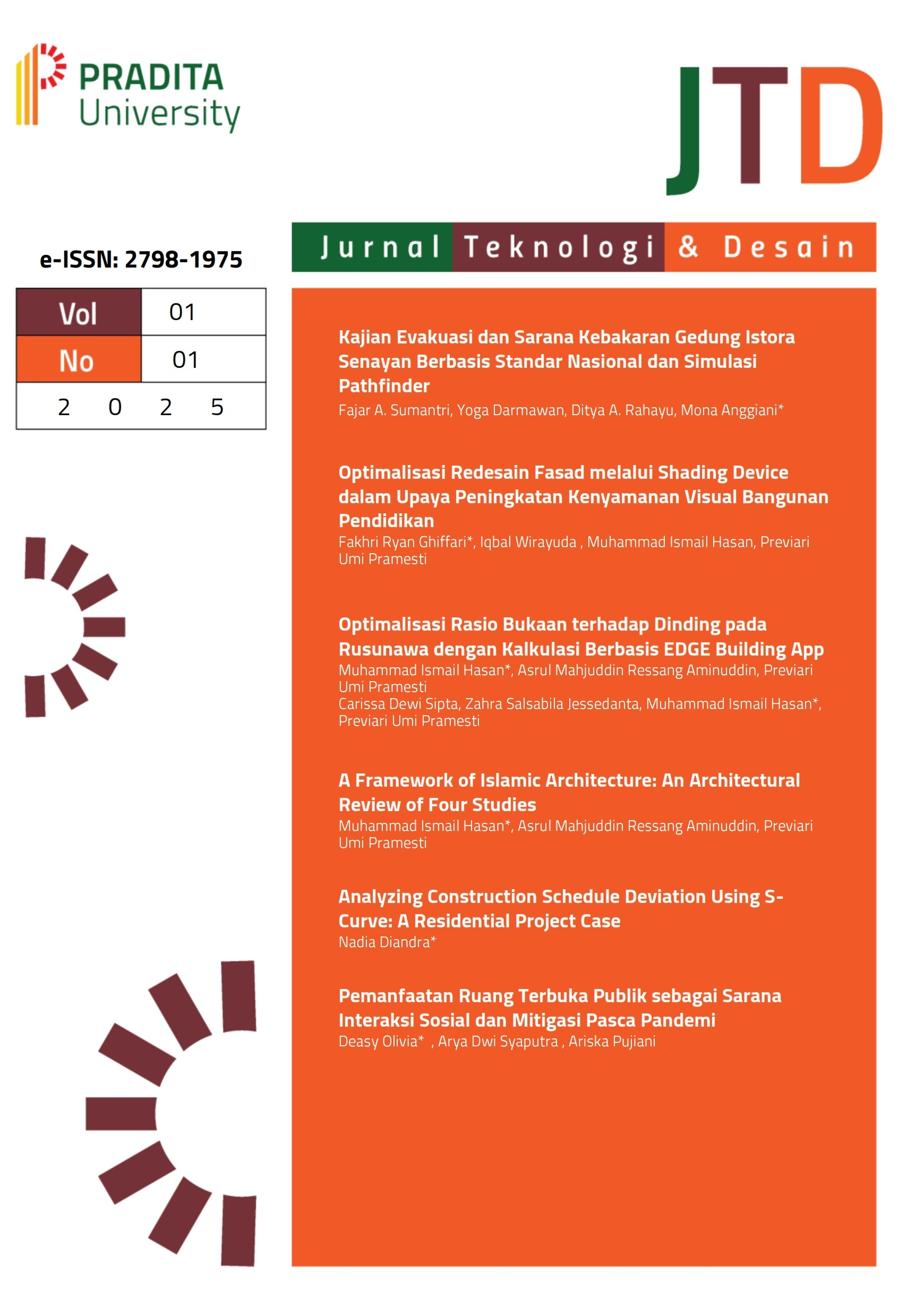Analyzing Construction Schedule Deviation Using S-Curve: A Residential Project Case
DOI:
https://doi.org/10.51170/jtd.v1i01.115Keywords:
Schedule deviation, s-curve, project delaysAbstract
Construction project delays are one of the main problems in the construction industry in Indonesia, especially in medium-scale housing developments. This study aims to analyze the deviation of the project implementation schedule using the S-curve evaluation method in the residential project case. The method used is a descriptive quantitative approach with a case study, based on weekly cumulative weight data from the planned and actual S-curves.
The evaluation results show that until the 35th week (June 2, 2024), the actual progress of the project only reached 53.67%, compared to the plan of 59.39%, with a Schedule Performance Index (SPI) value of 0.90. The largest deviation occurred in the 35th week, which was -3.01%, and the delay trend continued cumulatively from the 29th week to the 38th week. Evaluation based on work stages showed that the most significant deviation occurred in architectural and MEP work, while structural work was relatively on schedule.
The project completion projection shifted from November 11, 2024 to December 29, 2024. In response to the delay, an acceleration strategy was formulated in the form of additional manpower, extended working hours (overtime), adjustments to the weekly schedule, and consideration of change orders in the contract. This study emphasizes the importance of S-curve-based time control and the implementation of immediate corrective actions as part of adaptive project management






